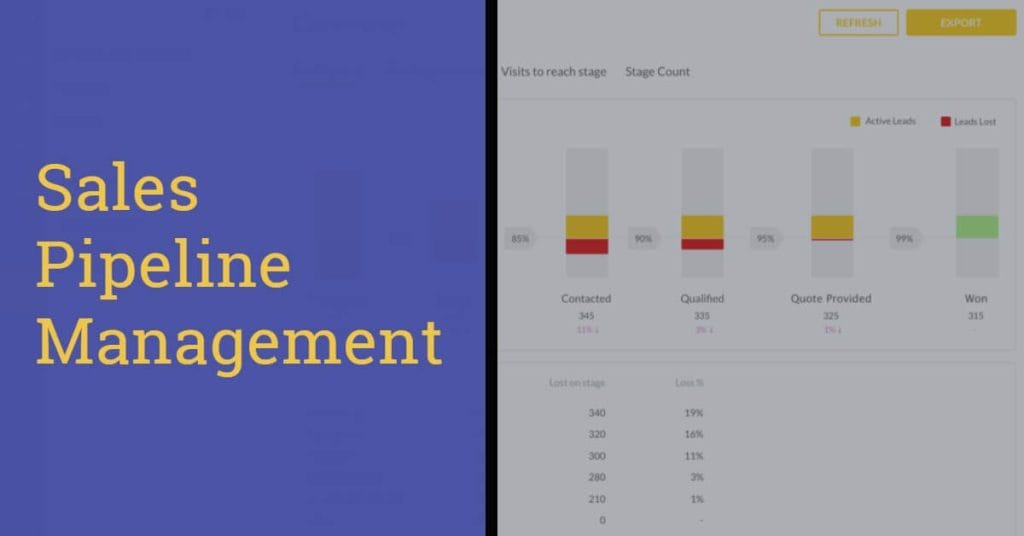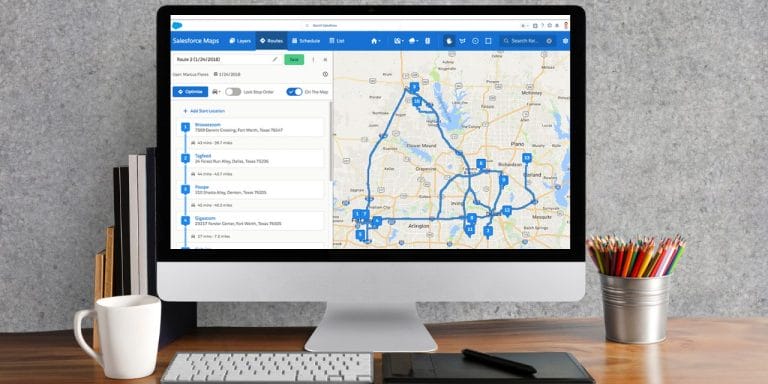Sales pipeline management is extremely important.
Manage your pipeline correctly and your reps will connect with more prospects and close more deals. Mismanage your pipeline and… Well, the results won’t be nearly as favorable.
But here’s the thing: managing one’s pipeline is anything but easy. That’s why we’ve put together this guide! Keep reading to learn what sales pipeline management is, why it’s important, and how to do it effectively in 2023 and beyond. Let’s dive in!
What is a sales pipeline?
Your sales pipeline is a visual representation of your company’s sales process.
It should show every prospect your sales team is in contact with, and how close said prospects are to making a purchase. It should also give you, the sales manager, an idea of when new deals will close and how much each deal will be worth to your organization.
If, for example, you have $100k worth of deals in your sales pipeline and know that your team’s average close rate is 20%, you can reasonably expect to generate $20k of revenue.
The next step is to estimate when that money will hit company coffers, which you can do by analyzing past deals and the specific pipeline stage your prospects are currently in.
When you begin to do this kind of analysis, you engage in sales pipeline management.
Why is Sales Pipeline Management Important?
As stated above, sales pipeline management is critical to your company’s success.
If you don’t manage your pipeline effectively, you won’t be able to connect with quality leads, build meaningful relationships with them, or close deals on a regular basis.
Numerous studies back this up. According to the Harvard Business Review, effective pipeline management produces an average growth rate of 5.3%. Moreover, companies that master a few sales pipeline management best practices produce 28% more revenue.
There are other benefits to pipeline management in sales, too…
Once you learn to manage your sales pipeline the right way, you’ll be able to forecast future results with greater accuracy. You’ll also know when and where to allocate resources. And you’ll have the information you need to increase deal velocity, volume, and size. Win!
12 Sales Pipeline Management Best Practices
We’ve answered the question, “What is sales pipeline management?” and explained why it’s so important. Now, we’ll cover 12 sales pipeline best practices you can use to supercharge your efforts in this area.
1. Follow up
If your reps don’t follow up they won’t make sales. Plain and simple.
How many times should they follow up with each prospect? Well, 80% of sales require 5+ follow ups. Unfortunately, most reps give up after sending a single follow-up message.
So, the first thing you can do to improve your sales pipeline management skills is to ask reps to contact leads multiple times. Then ask them to contact said leads in multiple ways.
They might not find success emailing prospects five times in a row. But what if they email them one day, call them the next, send them a text on the third, connect with them via Linkedin on the fourth, and send another email on the fifth? Success is more likely.
2. Focus on Quality Leads
Not every lead is created equal.
Some will take a look at your products and think, “Eh, it’s kinda cool, I guess.” Others will see them and think, “I must have it. NOW!” Your reps should focus on the latter folks.
The easiest way to boost sales is to focus your reps’ efforts on the prospects who already want to buy from them. To figure out who these people are, analyze your sales pipeline.
Which prospects have expressed extreme interest in your products/services? Which ones have visited your site, downloaded your ebooks, and opened your emails. Which ones are in the final stages of the buying process? These folks should be your reps’ top targets.
3. Filter Low Quality Leads
Your reps need to focus on quality leads. They also need to abandon bad-fit prospects. Why hold on to someone if you know, deep down, that they’ll never buy from you?
It can be hard to let go of leads—especially when reps have spent weeks or months building relationships with them. But it’s the right thing. Bad fit prospects will only drag your reps down.
This begs the question: what’s a bad-fit prospect? It’s simple, a bad fit prospect is any prospect that’s said they won’t buy from you, or can’t be moved to a later stage of your sales pipeline. When you learn to identify these people and cut them, your pipeline will be healthier.
4. Monitor Key Sales Pipeline Metrics
Your reps are focusing their efforts on quality prospects, eliminating bad-fit leads from your pipeline, and following up these folks on a consistent basis.
Congratulations, your sales pipeline management efforts are bearing fruit! Now what?
It’s time to start monitoring key sales pipeline metrics. The ones you pay attention to will depend on your specific goals. But in general, we suggest monitoring the number of deals in your pipeline, the average size of each deal, and your team’s close rate.
If possible, monitor these metrics (and any others you deem important) on a weekly basis. Then compare your team’s results over time to see if you’re headed in the right direction.
5. Review and Improve Pipeline Processes
Monitoring sales metrics will help you determine which sales techniques work and which don’t. You can then use this information to optimize your sales strategy for greater success.
Remember, just because a specific sales technique killed it last year doesn’t mean it will prove effective this year. The opposite is also true. Lackluster techniques in years past may work like gangbusters in the present. You won’t know until you test your approach.
Challenge every aspect of your pipeline processes, from your reps’ first emails to their closing pitches. Then look for ways to improve them—especially if they’re producing subpar results.
6. Regularly Update Pipeline
Your sales pipeline is a living thing.
To succeed at sales pipeline management, you need to treat it as such and update it on a regular basis. That way it doesn’t become disorganized and useless to your team.
Make sure new leads are added correctly, old leads are updated when necessary, and every bit of information is accurate. It will take time to do these things, but it will be worth it.
7. Keep Sales Cycles Short
According to one recent study, it takes 4+ months to close 75% of B2B deals.
There are many reasons for this, chief among them being the general price of B2B products and the number of decision-makers involved in the buying process.
As a sales manager, you need to help your reps shrink their sales cycles. Why? Because the longer it takes them to close a deal, the more likely it is that said deal will fall through.
Ask your reps to shorten the amount of time between follow-up calls. Or to give prospects more information in their initial emails. Or to push for a product demo sooner. You’ll need to experiment with different strategies to figure out what works for your team.
8. Standardize Sales Processes
The best sales teams have standardized sales processes. That doesn’t mean they treat every prospect the same. But it does mean they lead every prospect down a similar path to sale.
It makes sense when you think about it. Your company’s ideal customers will have a lot in common. As such, they’ll have many of the same pain points and objections. A standardized sales process will allow your reps to address these things in a confident and logical way.
Your sales pipeline management duties should include sales process analysis and enforcement. Make sure the process works. Then ensure your reps follow it to a T.
9. Provide Prospects In-depth Info
Your company’s prospects need detailed information before they agree to make a purchase. It’s your reps’ job to give it to them. You can help them out with this by providing content.
Yes, your reps can talk about product features via phone and email. They can explain why said features matter, too. But this might not be enough. Your prospects might want to dig deep—something they might only be able to do with a blog post, ebook, or white paper.
So, connect with your company’s marketing team and ask them to create these kinds of in-depth materials. Then, once they’ve been made, give them to your sales reps. Encourage them to send the content to prospects when appropriate. It will help.
10. Manage Sales with a CRM
Customer relationship management software, CRM software for short, is a sales team’s best friend. If you haven’t already invested in this kind of solution, what are you waiting for?
Sure, that old Excel spreadsheet worked at first. But now that you have dozens of leads in your sales pipeline, you need to upgrade to a new tool. You need a quality CRM platform.
Here’s the good news: there are tons of them out there! Each is designed to help you manage your leads effectively, increase rep productivity, and ultimately, boost sales.
We don’t have time to debate the best CRMs in this article. Here are a few options to start researching: Salesforce, HubSpot, Zoho CRM, Pipedrive, and Close. (Note: one of the best things about these tools is that they each integrate seamlessly with SPOTIO!)
11. Forecasting
What’s next in our pipeline sales management list? Forecasting, the act of predicting future sales and the revenue each of these transactions will generate.
When you know how many deals you’ll close next month, you can make better decisions regarding the direction of your department. Consequently, your company’s leadership team can make better decisions about the direction of your entire organization, too.
There are a variety of tools you can use to help you generate accurate sales forecasts. We talk about seven of the best ones in this blog post. Study up!
12. Reporting
Last but certainly not least, your sales pipeline management efforts need to include reporting. If they don’t, you’ll never really know what’s working and what’s not.
Produce reports that focus on the specific KPIs we mentioned earlier: the number of deals in your pipeline, the average size of each deal, and your team’s close rate. Then feel free to add the other metrics you feel are important to the success of your sales team.
For example, you may want to report on the revenue generated per territory, the specific activities your reps perform, and/or which reps are currently performing best.
5 Best Sales Pipeline Management Software
As you might expect, there is software available to help you with sales pipeline management. The question is, which tool should you invest in? We suggest one of the following”
SPOTIO: If you manage an outside sales team, take a serious look at SPOTIO, which you can use to track pipeline, evaluate rep performance, generate custom reports, forecast future sales, and more. Doing so has been proven to boost revenue by 23%.
Pipedrive: With Pipedrive, users get a visual representation of their sales pipeline. They can also easily track communications, individual rep performance, and more.
Copper: Spend your day in the Google ecosystem? Consider Copper, a popular sales pipeline management tool that features sales analysis and forecasting features.
Zoho CRM: With Zoho CRM, users can manage their pipelines effectively, thanks to rep performance tracking, anomaly detection, and gamification capabilities.
Freshworks: Those managing inside sales teams might enjoy using Freshworks. With this tool, users can analyze their pipelines and extract deep insights using AI.
For more information on the best sales pipeline management software—and how to actually choose the right tool for your sales department—read this blog post.
See How SPOTIO Helps You Manage Your Sales Pipeline and Hit Your Sales Numbers
SPOTIO is the ultimate tool for sales pipeline management.
Once you invest in our industry-leading solution, you’ll have access to rep performance metrics, the ability to create custom reports, and cutting-edge forecasting tools.
Your reps will benefit from SPOTIO, too, as it’s equipped with task automation capabilities, route planning software, multichannel communications tools, and digital business cards.
You don’t have to just take our word for it, though, when we say SPOTIO is ideal for outside sales teams. Request a free demo today and experience the power of SPOTIO for yourself.




